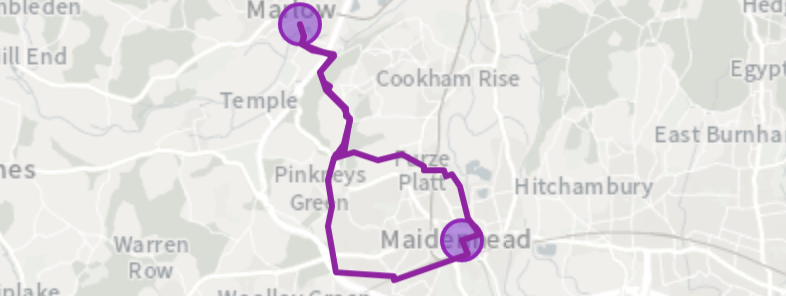Usefulness
I heartily agree that it is a great idea to get people out and enjoying this wonderful countryside of ours, however, looking at the practicalities or playing devils advocate if you prefer :-
Town to town or village to village is fine if they all have a method of transport to get you back to the start. Otherwise it would have to be a 2 car solution. Therefore Circular walks surely must be preferable.
Adding walks together to make a circular walk is not attractive surely, new walkers are not going to want to do more than 8 to 10 km.
New walkers are also not necessarily going to have walking apps which can display a gpx file, or even be able to navigate as a result of having it.
This initiative is presumably aimed at getting new people out and walking, but for the above reasons I'm not sure whether that will happen, am I missing something?
-
This may be something for much later once everything else is established and settled.
But I'd love to see the concept of a 8-10km 'ring' walk that starts from and returns to the same meeting point that walks you through and around the best paths near a place and back.
Referencing your other point, I'm a new walker (had never heard of GPX files) and found it pretty easy to download a GPX app. I think it comes down to a simple explanation of what it is and how you get one.
0 -
I was a walkleader for many years and I run a wbsite called Muddeeboots which has lots of "ring" walks Cheshire, N.Wales, Derbyshire, etc, but our small society are all seasoned walkers, mostly capable of creating their own walks, and navigating from an OS 1;25000 map, but Slowways is about something else which I haven't quite fathomed yet. Hmmmmm.
I could put a link to Slowways on my website just in case it may interest others?
1 -
I understood that the whole point of Slow Ways was to create a network of functional routes between towns and villages, rather than devising recreational circular walks. Ultimately, I believe the aim is to enable the user to traverse the whole country on foot while avoiding major roads.
2 -
Presumably you mean users will be able to traverse the areas around where they live without using the roads, my problem with this is why would they do it if it means trekking from A to B then having to find a means of transport to get back to A, realistically people have to get back home somehow. Joining walks up or retracing your steps entails extending the walks well beyond the capability of most new walkers, and the idea of people trekking huge distances is for the very few methinks, sorry to be negative but I wish I could see the point such that I could be positive about this initiative.
0 -
I believe the primary aim is, as Miranda says, to devise functional routes between settlements; there are plenty of alternative guides for recreational circular walks around many settlements in the UK. Two of the key criteria used in plotting the routes (where possible) are that there are public transport links and accommodation at either end of each route, which addresses the point about retracing steps. Whilst there are differences, you might want to compare the aims of Slow Ways with the National Cycle Network developed by Sustrans. Both of these enterprises have, in my opinion, appeal for both novice and experienced users.
1 -
Thank you Michael for the feedback it will be interesting to see how it develops, I can see the aim just not certain about the uptake, but I hope it takes off as their has obviously been a lot of work and thought undertaken to develop it to this pont. Good luck.
0 -
I've been doing triangular walks between shorter Slow Ways. I had to use my first transport today (a bus back from Tamworth). That's one use of transport in the process of walking 8 Slow Ways!
2 -
I've noticed that some Slow Ways with more than one route may start to form loops or connect interesting paths, so there are plenty of possibilities beyond going place to place that will emerge organically.
 1
1 -
I think the descriptions of public transport links at the settlements are key for this. Plenty of people willing to take a train or bus out to one settlement, do a walk and then a different train or bus back. It could be worth expanding the settlement surveys to do this - I’d argue that “accommodation for under £50”, although obviously useful for long trips, is likely to be used less than info about how frequent the public transport is at the place (e.g “At least hourly bus or train”).
0 -
I heartily agree, means of transport back to the start are key, the likelyhood of new walkers wanting to travel long distances is remote initially, at least until they have become more experienced at reading maps, fitter, and able to spend plenty of time going from place to place.
0
Please sign in to leave a comment.
Comments
10 comments